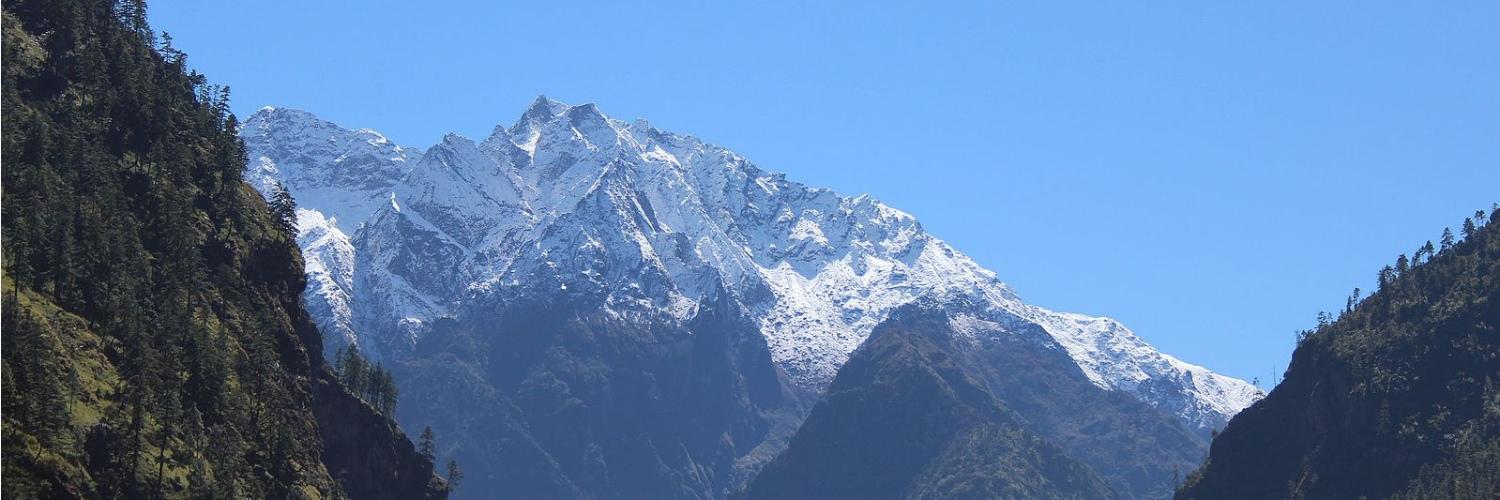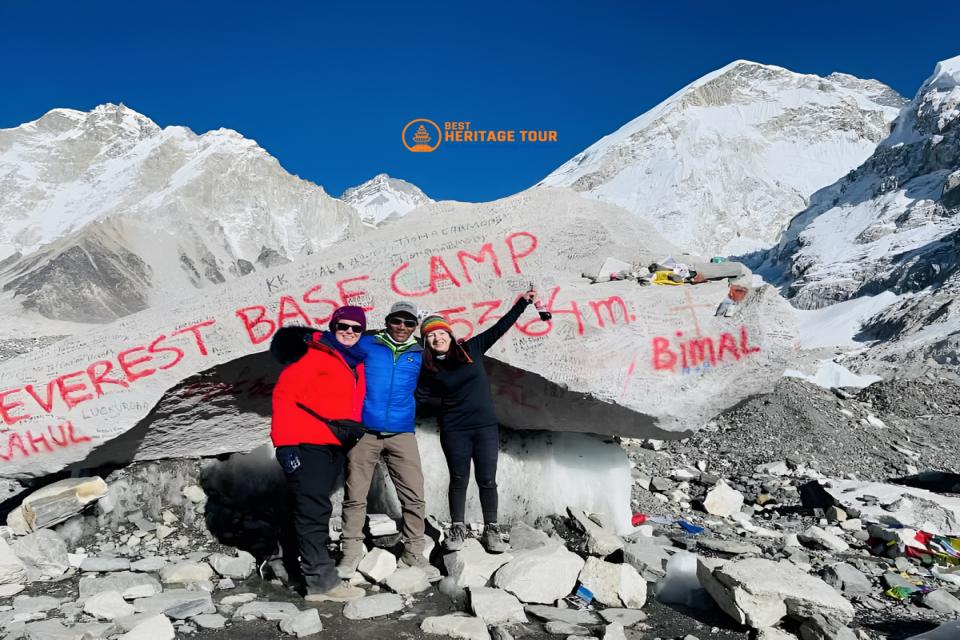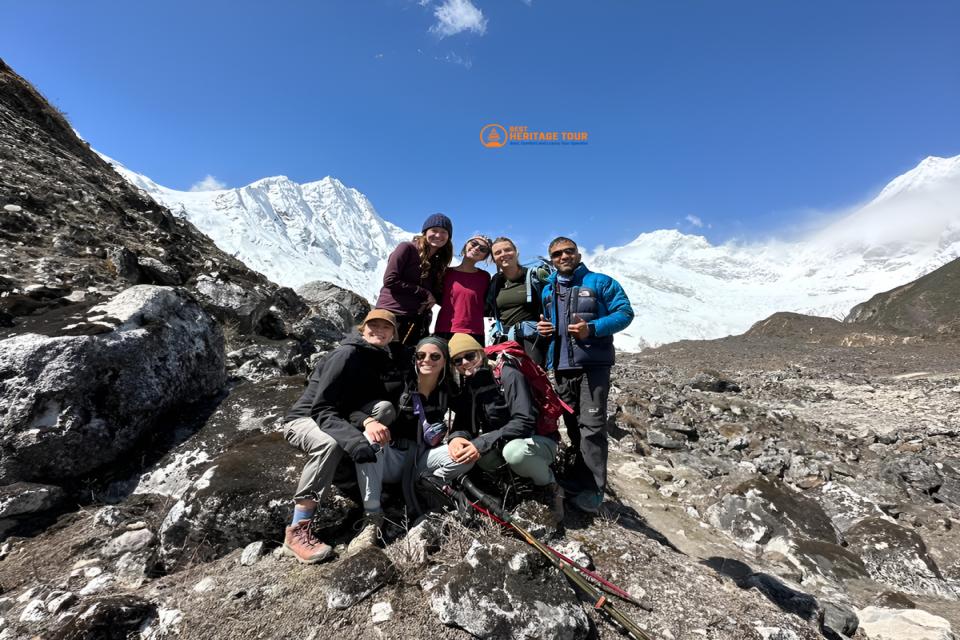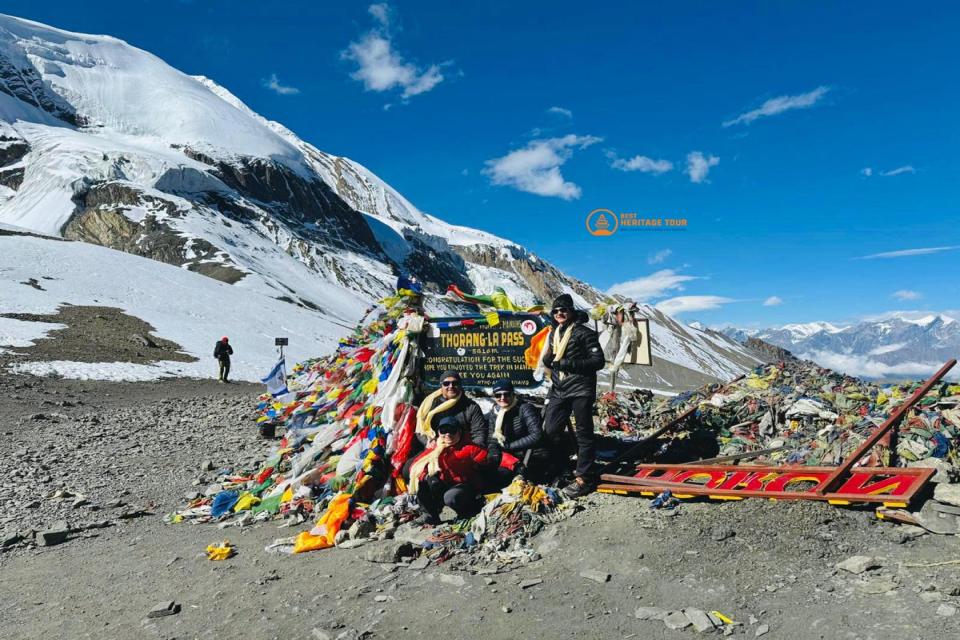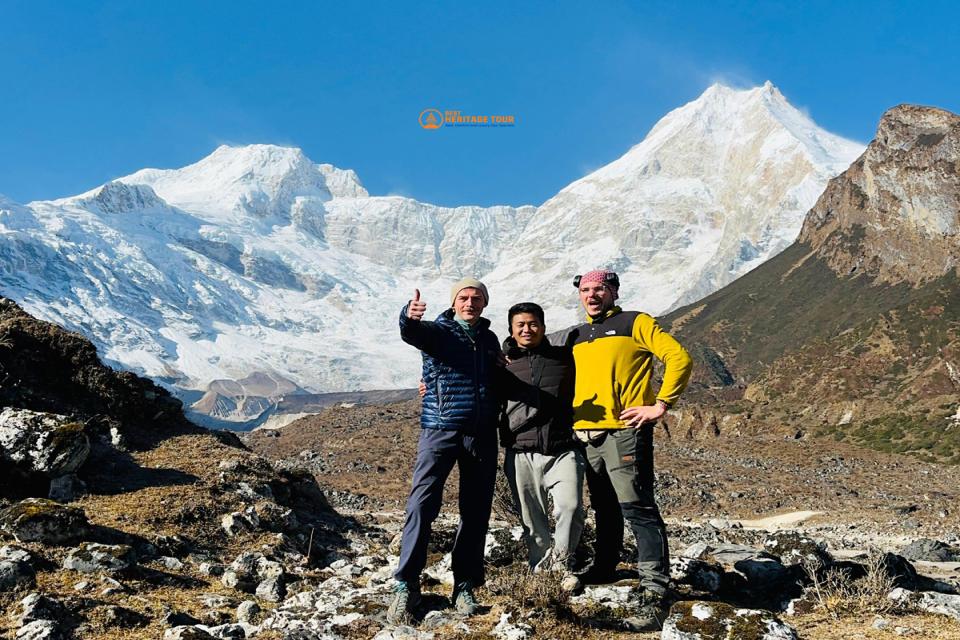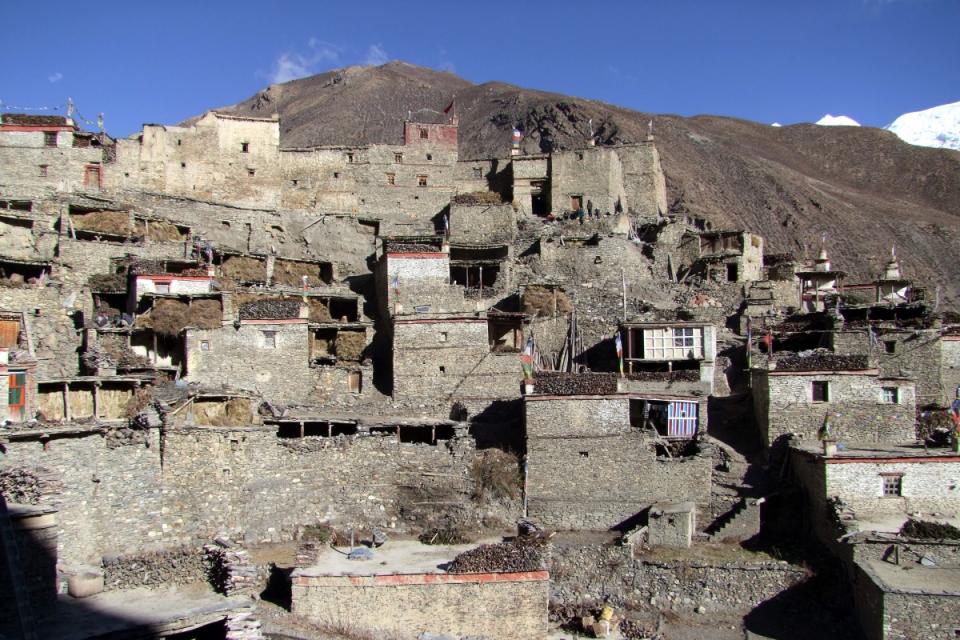If you’re an avid trekker looking for a thrilling Himalayan adventure beyond the usual tourist trails, the Manaslu Circuit Trek offers one of Nepal’s most spectacular yet lesser-known journeys. Stretching around the world’s eighth-highest mountain, Mount Manaslu (8,163 meters), this circuit presents an authentic blend of rugged landscapes, rich Tibetan-influenced culture, and challenging high-altitude trekking.
With the trekking seasons for 2026 and 2027 fast approaching, now is the perfect time to start planning your expedition. This guide will walk you through everything you need to know about trekking the Manaslu Circuit in 2026/2027, from the best seasons, itinerary, permits, costs, to essential preparation tips. Whether you’re a seasoned trekker or a motivated beginner, the Manaslu Circuit promises a once-in-a-lifetime experience in Nepal’s untouched wilderness.
What is the Manaslu Circuit Trek?
The Manaslu Circuit Trek is a remote and demanding trekking route that circles Mount Manaslu, Nepal’s eighth-highest peak, located in the west-central part of the country. Unlike the well-trodden Annapurna region or Everest region, Manaslu remains less crowded, offering a peaceful yet adventurous trekking experience.
The trek covers approximately 177 kilometers (110 miles) and typically takes between 14 to 18 days to complete, depending on the itinerary and acclimatization days. The route traverses diverse terrains, lush subtropical forests, terraced farming villages, alpine landscapes, and rugged mountain passes such as the famed Larkya La Pass at 5,160 meters.
Trekking here is as much about cultural discovery as it is about natural beauty. You will encounter traditional Gurung and Tibetan-style villages, ancient monasteries, prayer flags fluttering in the mountain breeze, and warm local hospitality. The Manaslu Conservation Area preserves this unique environment, making the trek a rewarding journey for nature lovers and cultural enthusiasts alike.
Compared to other popular treks like the Annapurna Circuit or Everest Base Camp, Manaslu offers a more remote and less commercialized route, perfect for travelers seeking tranquility and authenticity while still enjoying stunning Himalayan vistas.
Best Time to Trek Manaslu in 2026/2027
Choosing the right time for your Manaslu Circuit Trek in 2026 or 2027 can dramatically impact your experience. The region’s weather varies significantly across seasons, affecting trail conditions, visibility, and crowd levels.
1. Autumn (September to November): Best Season for Manaslu Trekking
Autumn is widely regarded as the best time for trekking in Nepal, and Manaslu is no exception. During September to November 2026, post-monsoon skies are clear, revealing spectacular views of Manaslu and surrounding peaks. Temperatures are moderate, and the rhododendron forests bloom beautifully. This season also coincides with several cultural festivals in local villages, adding a vibrant cultural element to your trek.
Expect stable weather but be prepared for chilly nights, especially as you approach the Larkya La Pass.
2. Spring (March to May): Another Great Window
The spring of 2027 offers another excellent trekking window with milder temperatures and blooming flora. Rhododendrons and wildflowers carpet the lower valleys, and the mountain vistas are clear. However, late spring can bring increased crowds and slightly warmer temperatures.
3. Winter (December to February): For the Experienced Adventurer
Winter trekking on the Manaslu Circuit is less common due to heavy snowfall and freezing temperatures, especially at high altitudes. If you are a seasoned trekker looking for solitude and can handle cold weather, winter offers an entirely different experience with pristine snowy landscapes and almost no other trekkers.
4. Monsoon (June to August): Not Recommended
The monsoon season brings heavy rainfall, landslides, and slippery trails, making trekking risky and unpleasant. The best advice is to avoid Manaslu during these months.
Manaslu Circuit Trek Itinerary (Day-by-Day)
Most trekkers spend around 14 to 18 days on the Manaslu Circuit, balancing daily trekking distances with necessary acclimatization days to prevent altitude sickness.
Sample 16-Day Itinerary:
Day 1: Arrival in Kathmandu and preparation
Day 2: Drive to Soti Khola (trailhead)
Day 3: Trek from Soti Khola to Machha Khola
Day 4: Machha Khola to Jagat (entry point of Manaslu Conservation Area)
Day 5: Jagat to Deng
Day 6: Deng to Namrung
Day 7: Acclimatization day in Namrung
Day 8: Namrung to Samagaon (base village below Manaslu)
Day 9: Rest or side trek to Manaslu Base Camp
Day 10: Samagaon to Larkya Phedi
Day 11: Cross Larkya La Pass (5,160 m) to Bimtang
Day 12: Bimtang to Dharapani
Day 13: Dharapani to Jagat
Day 14: Jagat to Soti Khola
Day 15: Drive back to Kathmandu
Day 16: Departure or extra day for sightseeing
Optional side treks like Tsum Valley can add days but offer unique cultural insights.
Permits and Regulations for Manaslu Trek 2026/2027
Trekking the Manaslu Circuit requires a few important permits, and staying up-to-date with the latest 2026/2027 regulations is essential for a smooth journey.
-
Required Permits
1. Manaslu Restricted Area Permit (Manaslu Conservation Area Permit - MCAP): This is the key permit for trekking in the Manaslu region. It helps preserve the fragile ecosystem and local culture. The permit fee varies by nationality but is generally higher for Western tourists. It must be obtained in Kathmandu or through authorized trekking agencies.
2. Annapurna Conservation Area Permit (ACAP): Required because the trek overlaps some areas protected by ACAP, especially near the trail’s end.
3. Trekkers’ Information Management System (TIMS) Card: Issued by Nepal Tourism Board to monitor trekkers in the country.
-
Updated Fees and Application Process (2026/2027)
The permit fees for Manaslu Trekking typically range between USD 70 to 100 for MCAP per week, with additional fees for ACAP and TIMS. It’s important to verify the exact fees closer to your trek date, as Nepal periodically revises these prices.
You can apply for permits online through the official Nepal Tourism Board portal or via your trekking agency, which often handles all permits as part of their package.
-
Restricted Area and Group Requirements
Manaslu is a restricted trekking area requiring trekkers to be in a group of at least 2 people or hire a guide. Solo trekking is generally not permitted without a guide for safety reasons and to comply with local regulations.
Trek Difficulty and Physical Preparation
The Manaslu Circuit is considered a moderate to challenging trek, suitable for trekkers with good physical fitness and some high-altitude experience.
Key Challenges
- Length and altitude: The trek covers long distances daily and crosses the high-altitude Larkya La Pass at 5,160 meters.
- Variable terrain: Trails include rocky paths, suspension bridges, and steep ascents/descents.
- Weather: Temperatures can drop below freezing at high altitudes, especially at night.
Preparation Tips
- Cardiovascular fitness: Running, cycling, or swimming 3-4 times a week helps build stamina.
- Hiking practice: Long walks with a loaded backpack simulate trekking conditions.
- Altitude acclimatization: Include rest days in your itinerary to reduce risk of altitude sickness.
- Strength training: Focus on legs, core, and back muscles.
Essential Gear
- Quality trekking boots with good ankle support
- Layered clothing system: moisture-wicking base layers, insulating mid-layers, and waterproof outer layers
- Warm sleeping bag rated for -10°C or lower
- Trekking poles for stability on rough terrain
- Headlamp, sunscreen, and first aid kit
Accommodation and Food on the Manaslu Trek
Accommodation on the Manaslu Circuit mainly consists of basic teahouses and lodges, offering simple rooms with beds and shared bathrooms.
What to Expect
- Rooms are usually heated with wood or solar heaters in winter.
- Hot showers may be limited and come with an additional fee.
- Electricity is often powered by solar panels and available in the evenings.
Food Options
The menus typically include staples like dal bhat (lentil soup with rice), noodles, soups, and some local Tibetan dishes like momo and thukpa. Vegetarian options are widely available.
Tips for Staying Healthy
- Drink plenty of boiled or purified water; carry a water filter or purification tablets.
- Avoid raw vegetables and unpeeled fruits.
- Carry snacks like energy bars and nuts for long trekking days.
Cultural and Natural Highlights
One of the most rewarding aspects of the Manaslu Circuit Trek is the rich blend of cultural heritage and breathtaking natural beauty you experience along the way.
Local Communities and Culture
The Manaslu region is home to diverse ethnic groups, primarily Gurung and Tibetan-influenced communities. The villages you pass through showcase traditional stone houses with prayer flags, mani walls (carved stone tablets), and ancient monasteries.
Trekking here is a unique chance to witness Tibetan Buddhist culture deeply rooted in everyday life, from colorful festivals to local handicrafts. Villagers are known for their warm hospitality, often inviting trekkers to join in tea ceremonies or cultural events.
Flora and Fauna
The trek spans several ecological zones:
- Subtropical forests with rhododendron, oak, and bamboo
- Alpine meadows filled with wildflowers during spring and autumn
- Wildlife such as Himalayan thar (mountain goats), snow leopards (rare), musk deer, and a variety of birds like pheasants and eagles can sometimes be spotted.
The Manaslu Conservation Area strictly protects this biodiversity, making the trek appealing for nature lovers and photographers.
Safety Tips and Emergency Information
Trekking the Manaslu Circuit requires careful attention to safety, especially due to the high altitude and remote location.
-
Altitude Sickness Prevention
- Ascend slowly and take acclimatization days seriously.
- Stay hydrated and avoid alcohol.
- Be aware of symptoms: headaches, nausea, dizziness, and fatigue.
- If symptoms worsen, descend immediately.
-
Emergency Evacuation
The region has limited medical facilities, with the nearest hospitals several hours away by vehicle. Helicopter evacuation is available but costly and dependent on weather. Having comprehensive travel insurance covering high-altitude trekking and evacuation is essential.
-
Health Care Facilities
Basic health posts are located in villages like Samagaon and Bimtang, but serious medical issues require evacuation to larger towns.
Cost Breakdown for Manaslu Circuit Trek 2026/2027
Budgeting properly ensures a hassle-free trek.
Approximate Costs
|
Expense |
Estimated Cost (USD) |
|---|---|
|
Manaslu Restricted Area Permit |
$70-$100 per week |
|
Annapurna Conservation Permit |
~$30 |
|
TIMS Card |
~$20 |
|
Guide and Porter (optional) |
$25-$40 per day (guide) |
|
Accommodation |
$5-$15 per night |
|
Food |
$5-$12 per day |
|
Transportation (Kathmandu to Soti Khola round trip) |
$30-$70 |
|
Miscellaneous (gear rental, phone SIM, tips) |
$50-$100 |
Budget Tips
- Hiring a guide and porter is highly recommended for safety but can be shared among groups.
- Staying in teahouses is affordable; camping increases cost and effort.
- Cooking your own food is not practical on this route due to limited facilities.
How to Reach Manaslu Circuit Trailhead
The trek officially begins near Soti Khola, accessible from Kathmandu or Pokhara.
From Kathmandu
- Drive approximately 8-10 hours by local bus or private jeep through rugged mountain roads.
- Alternatively, fly to the nearby airport in Gorkha (limited flights) and then drive.
From Pokhara
- Longer drive (10-12 hours), but offers scenic mountain views en route.
Transportation options can be bumpy and slow, so plan accordingly.
Why Trek Manaslu Circuit in 2026/2027?
The Manaslu Circuit Trek continues to attract adventurers for its raw beauty and cultural richness, but 2026 and 2027 bring some compelling reasons to choose this time for your journey.
-
New Infrastructure and Improved Trails
In recent years, the Nepalese government and local communities have invested in improving trail safety, signage, and accommodation options without compromising the region’s pristine nature. This means a safer, more comfortable trek while preserving the authenticity that trekkers love.
-
Conservation and Responsible Trekking Efforts
The Manaslu Conservation Area Project has intensified efforts to reduce environmental impact, control trekking numbers, and promote sustainable tourism. Trekking in 2026/2027 supports these initiatives by following responsible practices, helping protect this fragile Himalayan ecosystem.
-
Less Crowded Than Popular Routes
While popular trails like Annapurna Circuit and Everest Base Camp can get crowded, Manaslu remains a hidden gem with fewer trekkers, allowing you a peaceful connection with nature and local culture. This is especially true during the shoulder seasons in 2026 and 2027.
-
Authentic Cultural Experience
Local festivals, traditional ceremonies, and the welcoming nature of mountain communities offer a cultural immersion hard to find elsewhere. The 2026/2027 trekking seasons provide ample opportunities to witness and participate in these unique experiences.
Conclusion
The Manaslu Circuit Trek in 2026/2027 offers an unparalleled Himalayan adventure, combining breathtaking landscapes, cultural richness, and challenging trekking in a remote part of Nepal. With proper planning, permits, and preparation, you can experience one of the last great off-the-beaten-path treks in the Himalayas.
If you’re ready to embark on a journey of discovery and adventure, start planning your Manaslu trek today with Best Heritage Tour. Book your permits, train your body, pack your gear, and get ready to immerse yourself in the majestic beauty of Manaslu.
Book your adventure today or get more info:
- Phone/WhatsApp/Viber: +9779851149197 / +9779810043046
- Email: bestheritagetour@gmail.com / info@bestheritagetour.com
- Website: www.bestheritagetour.com
- Location: Thamel Marg, Kathmandu, Nepal
Secure your spot now and trek the stunning Manaslu Circuit with Nepal’s trusted experts!
Author: Best Heritage Tour
Date: 19th June, 2025

